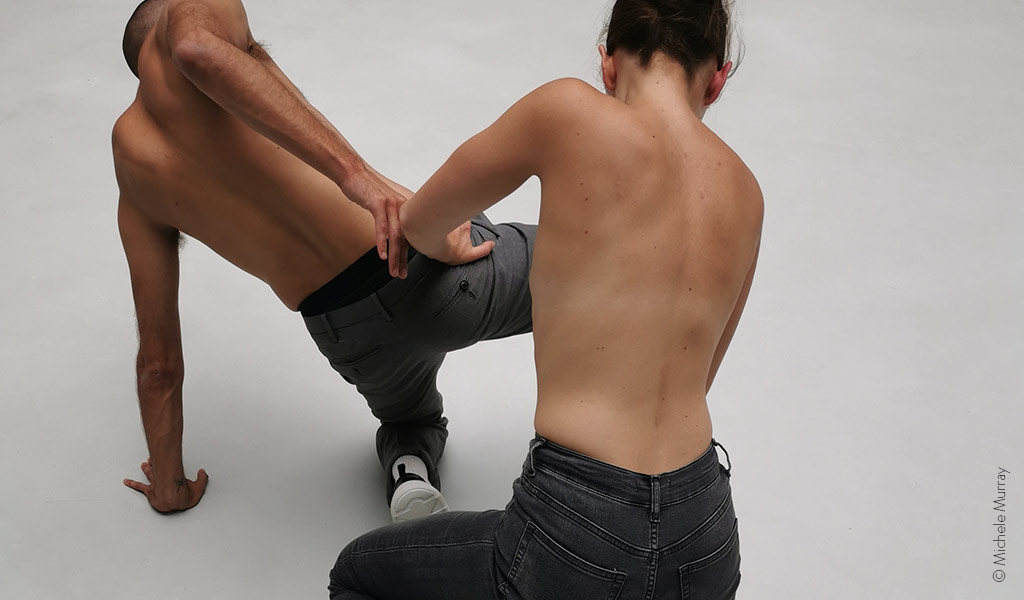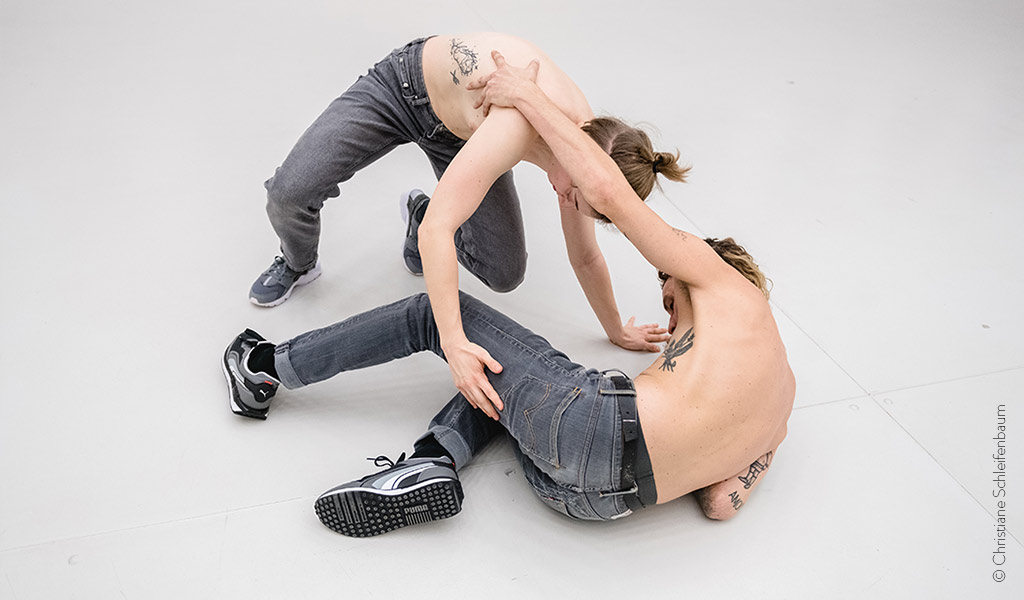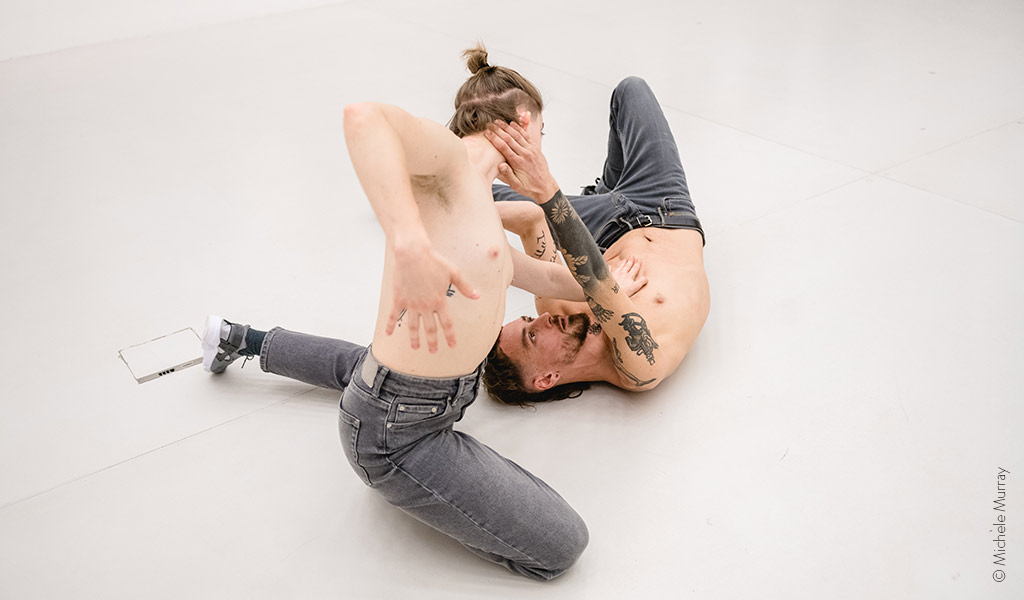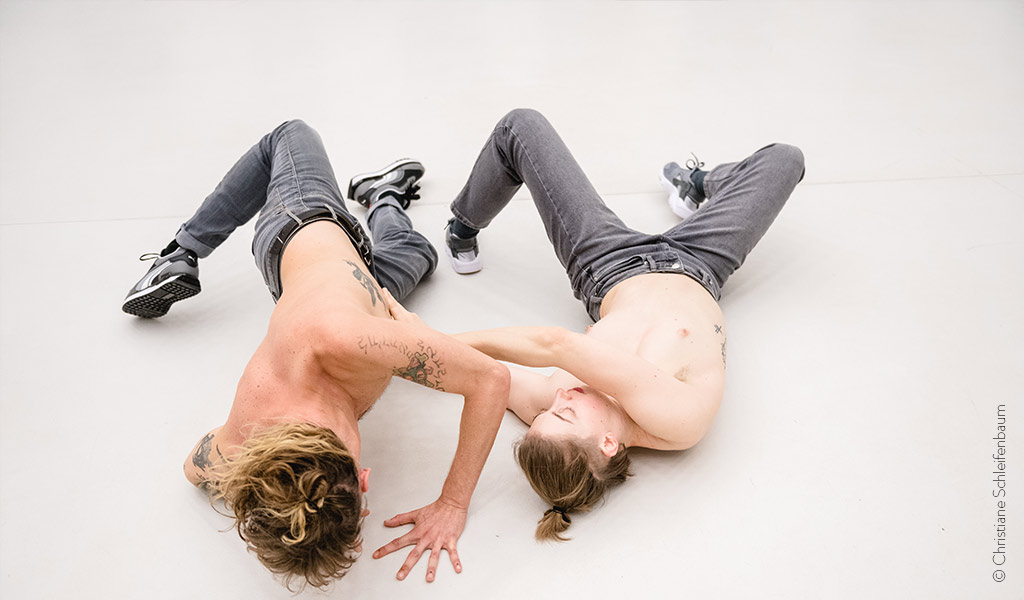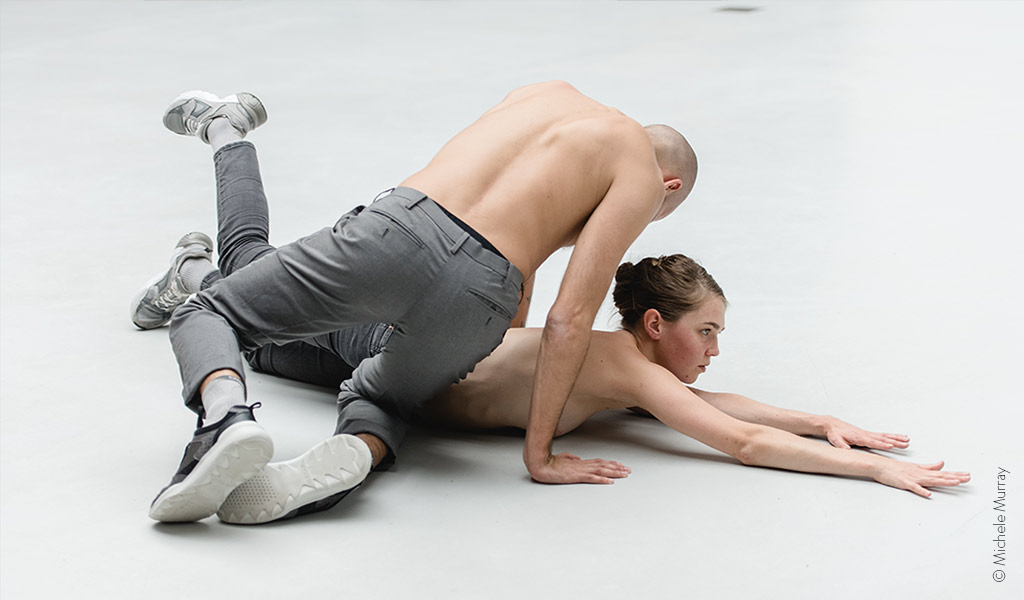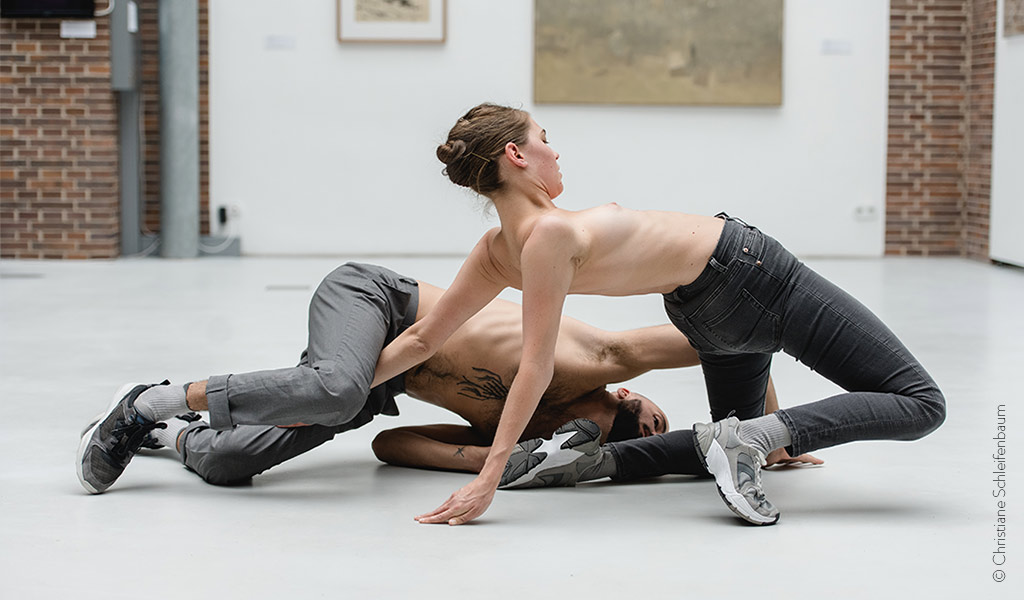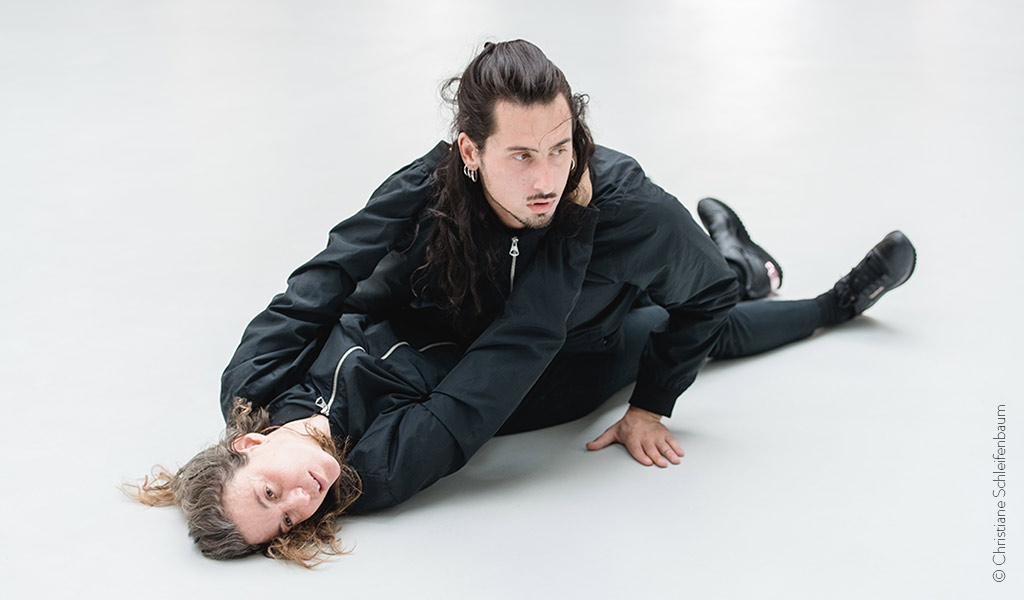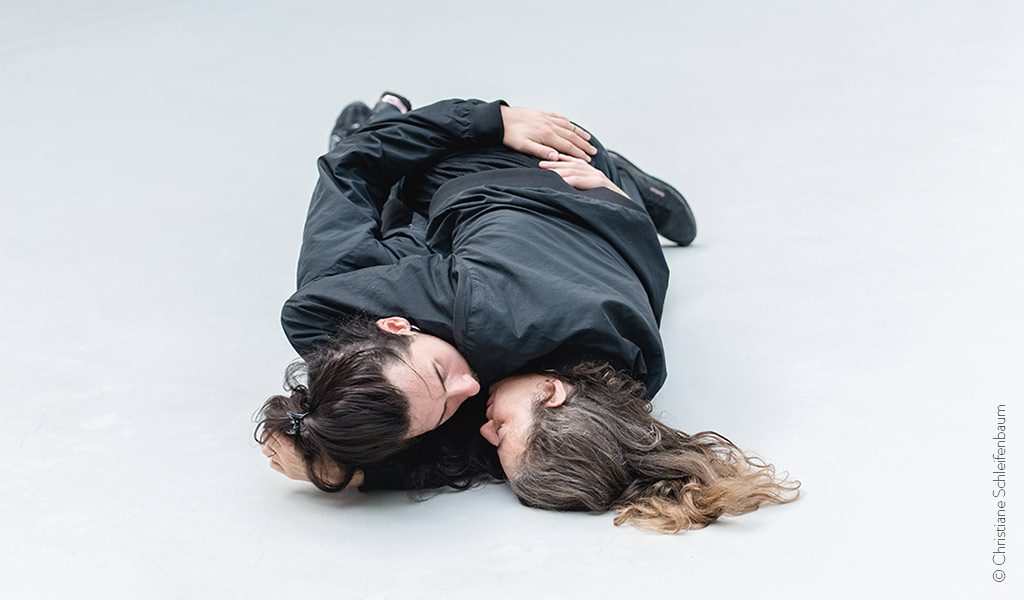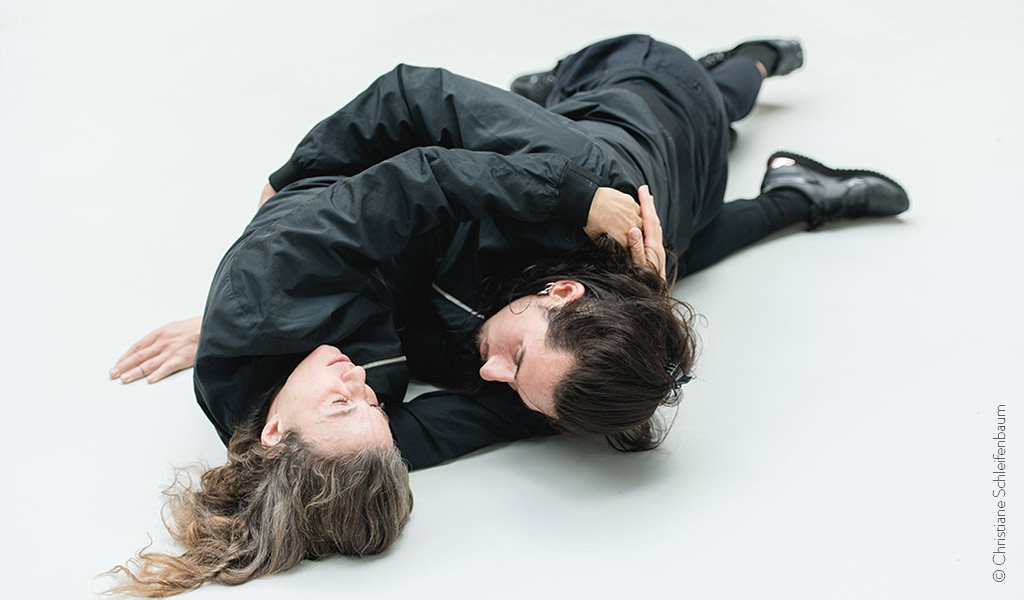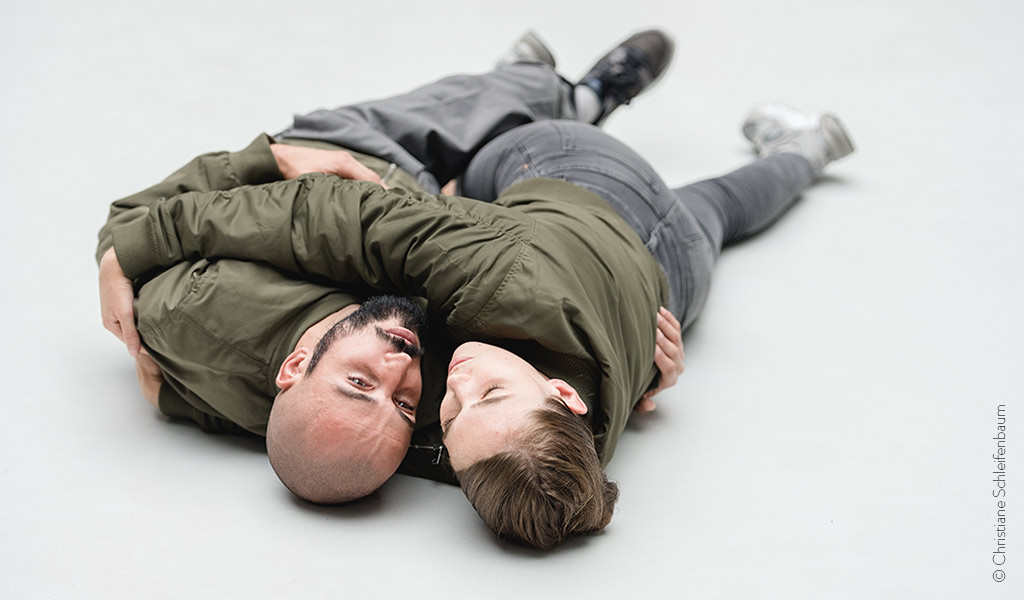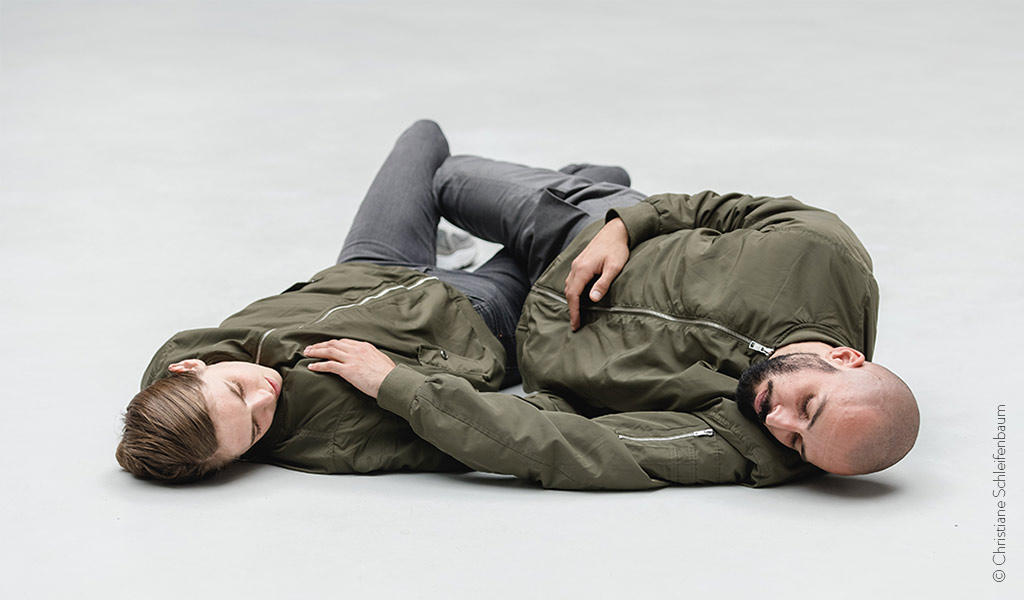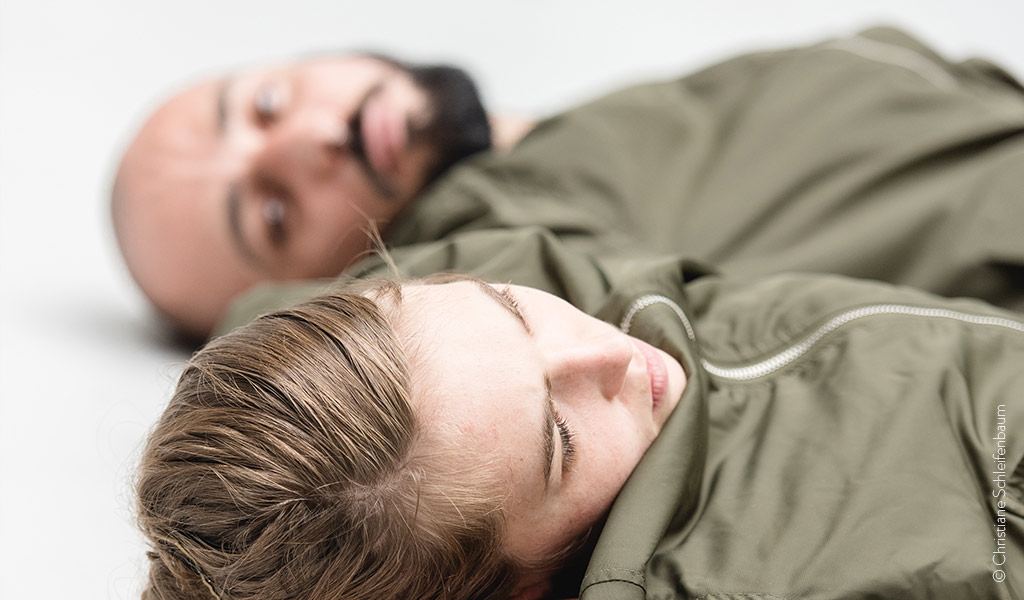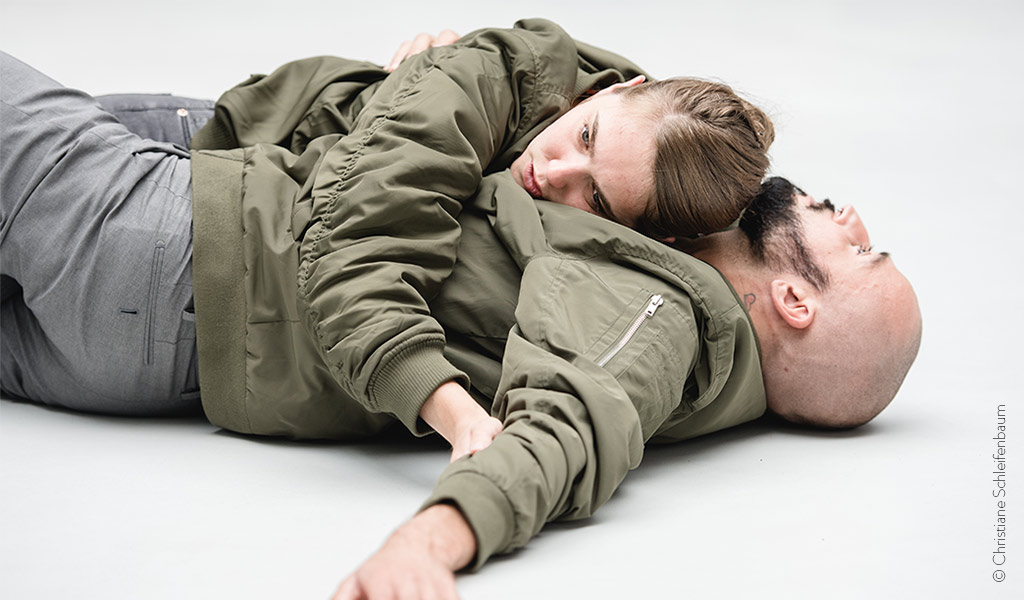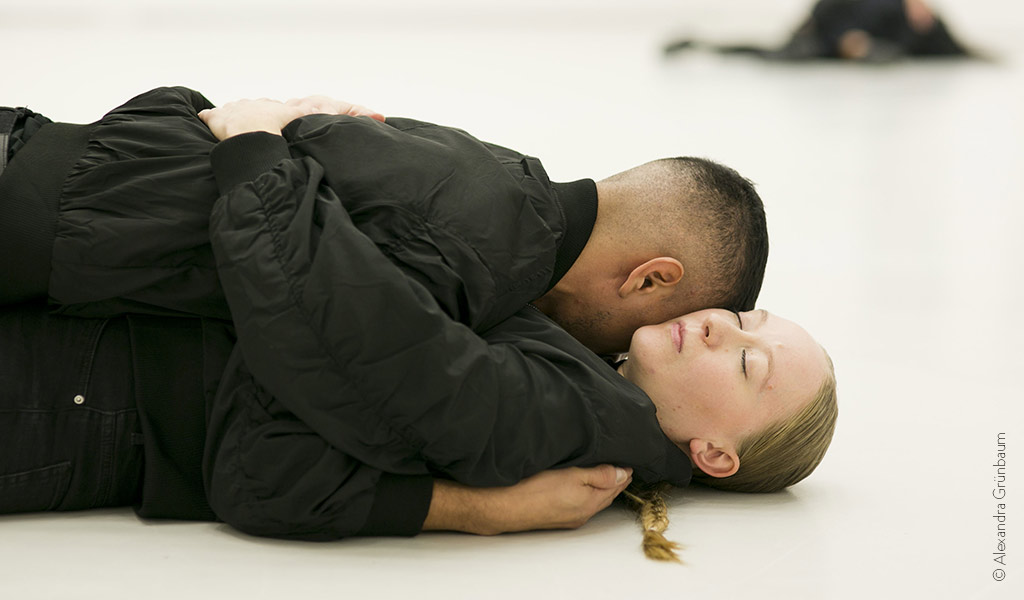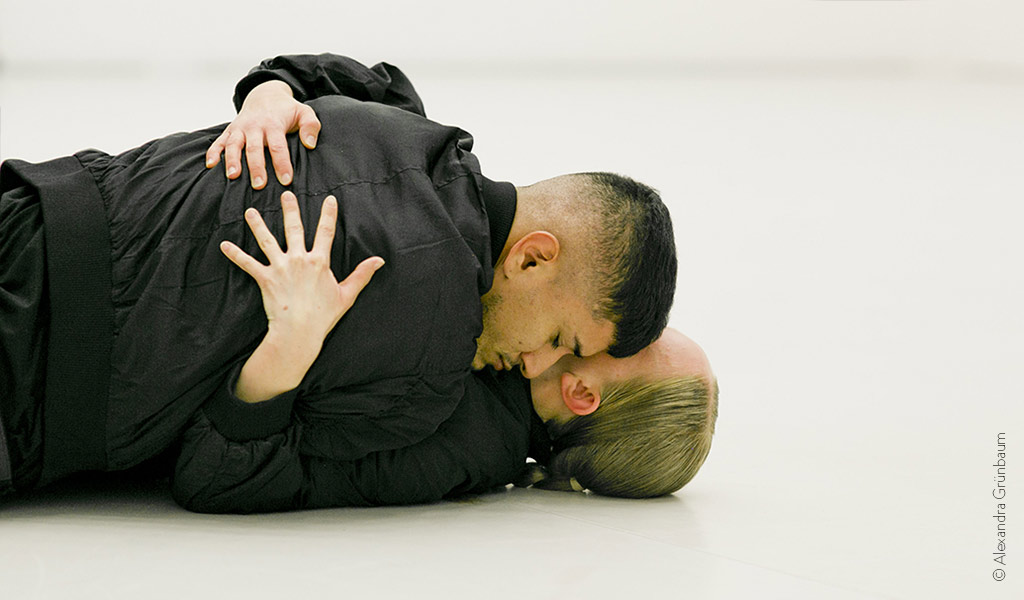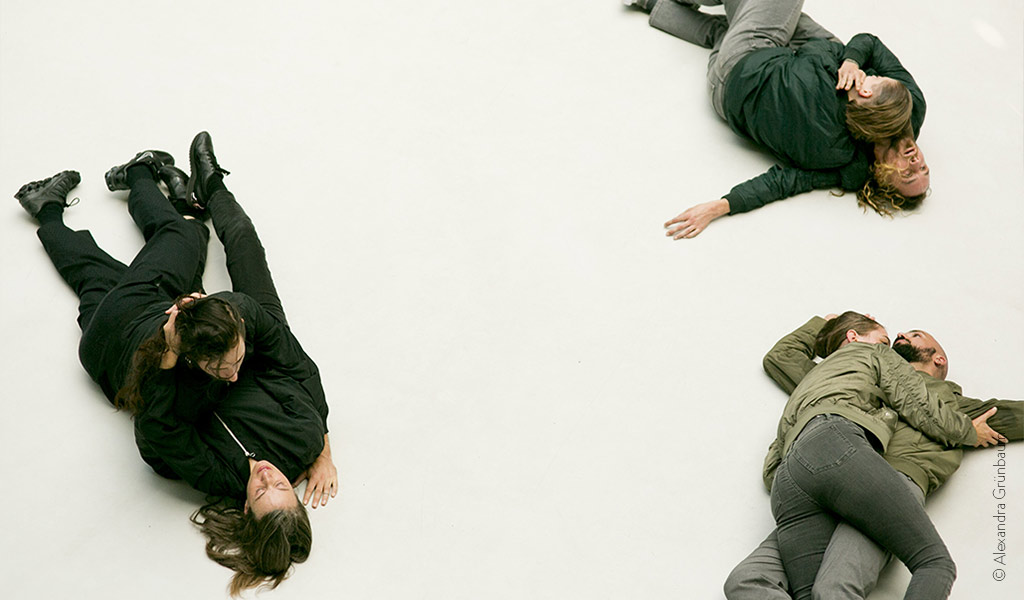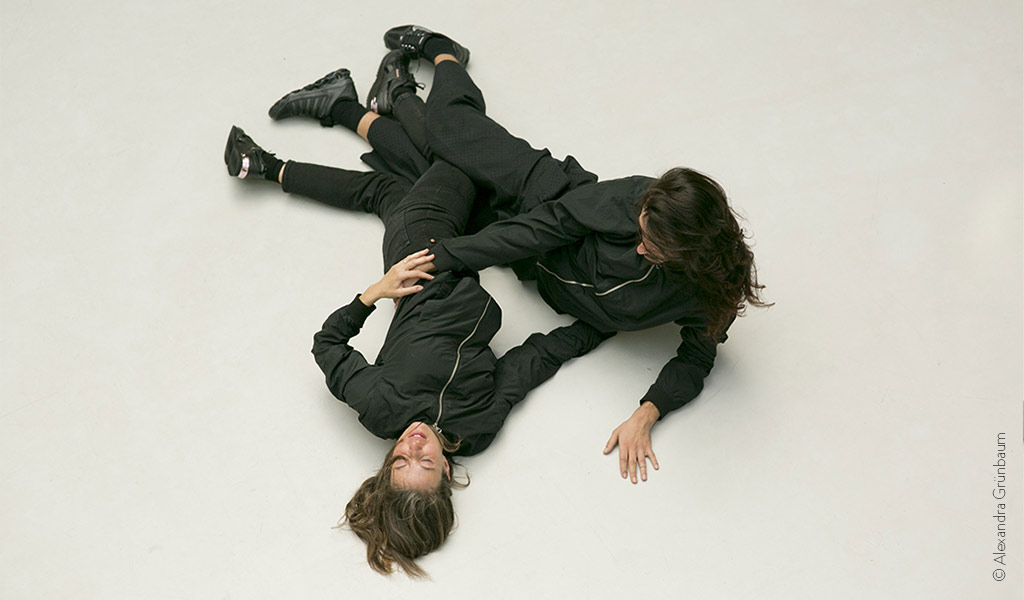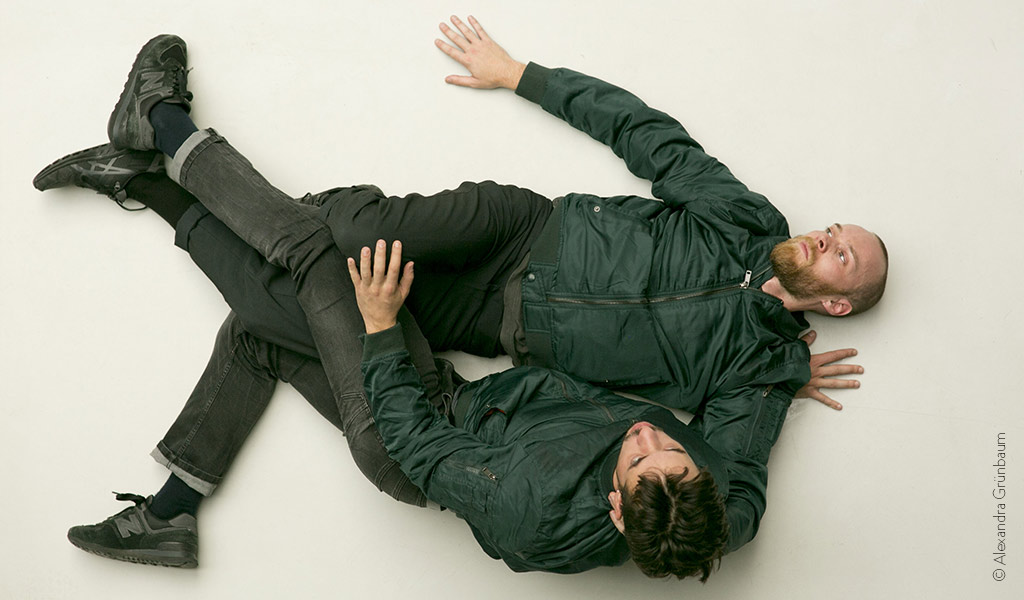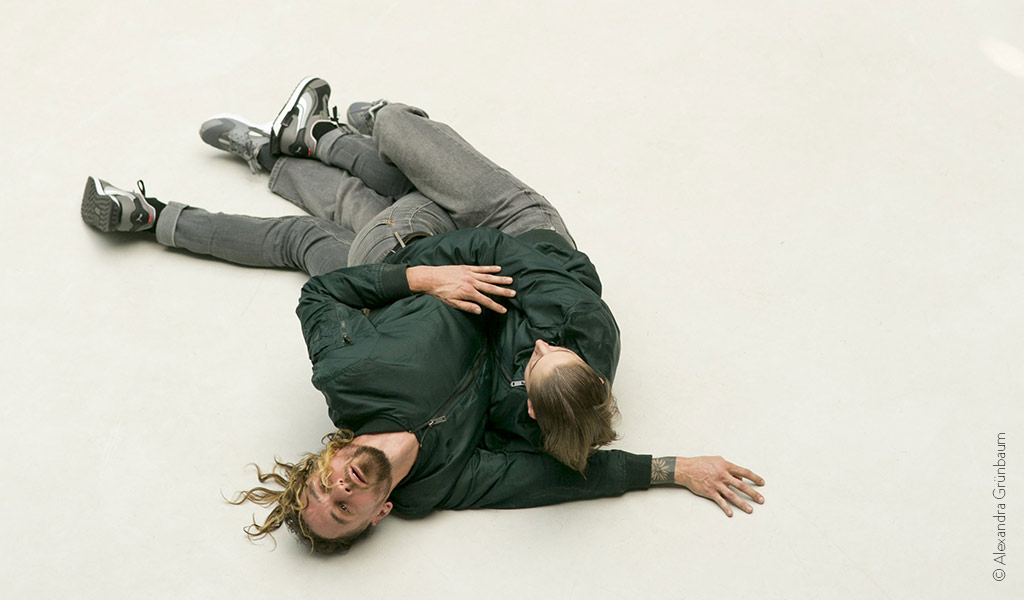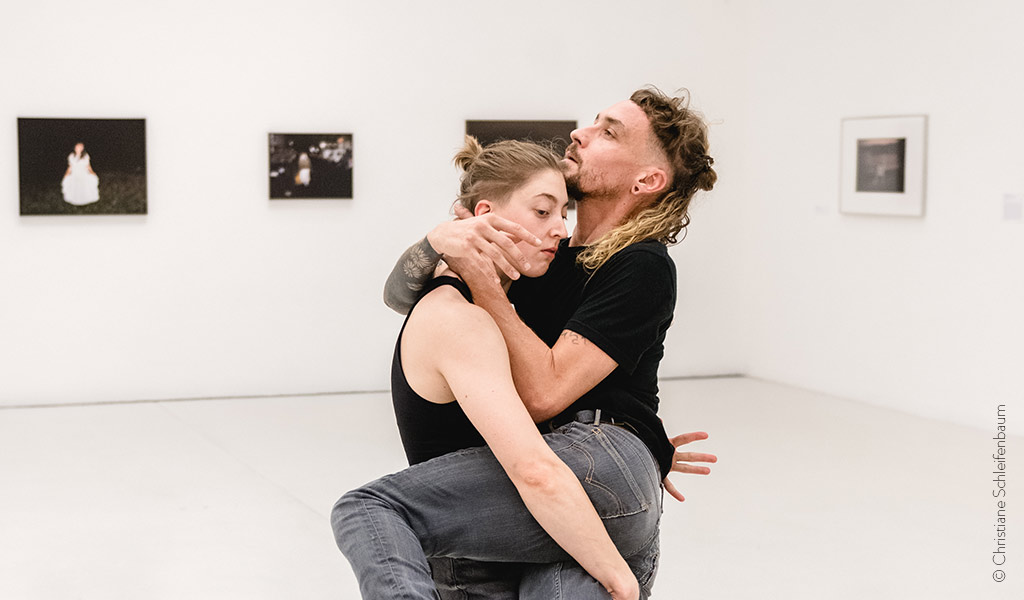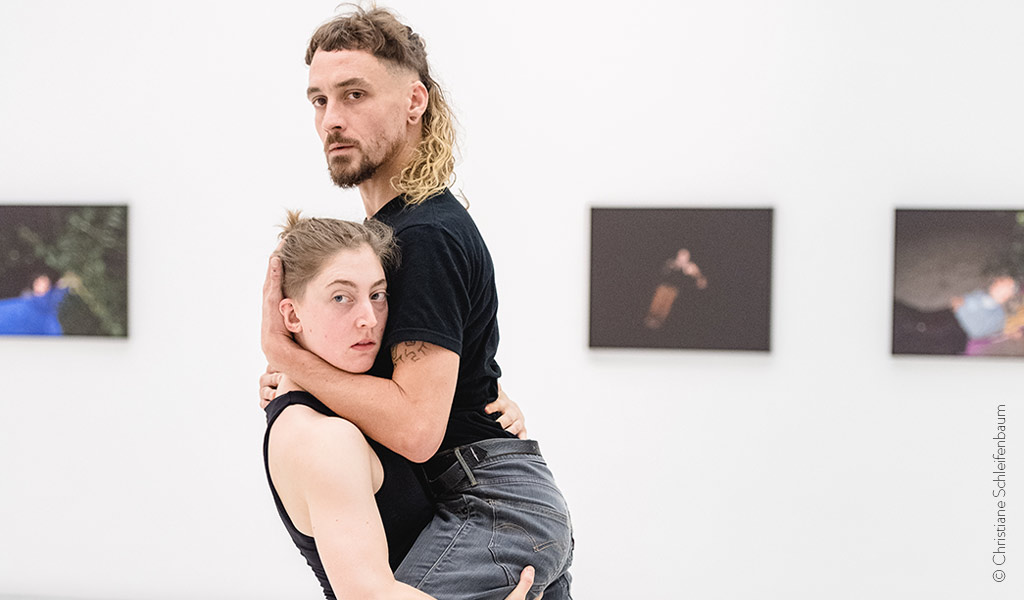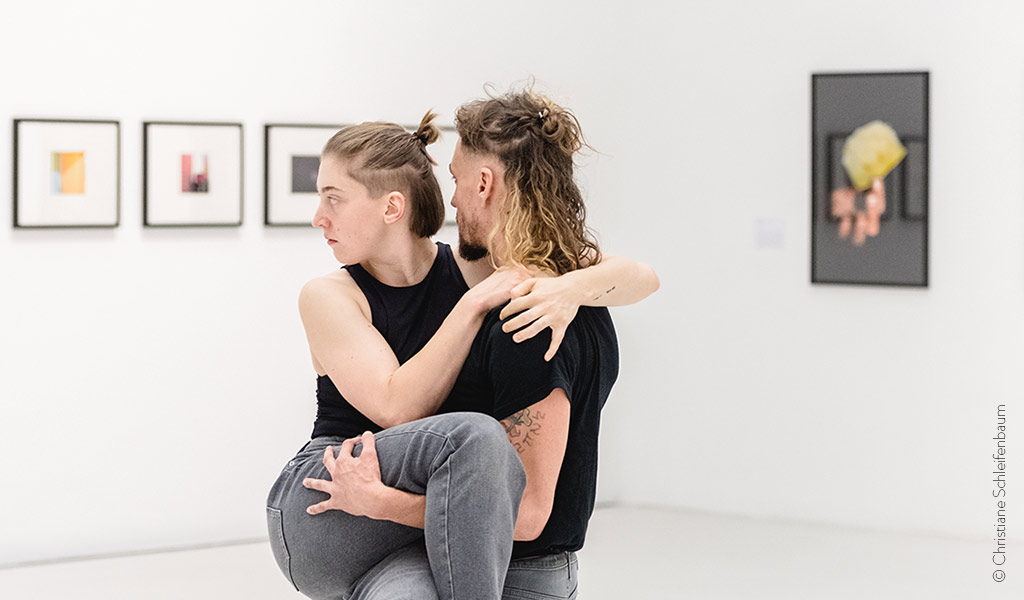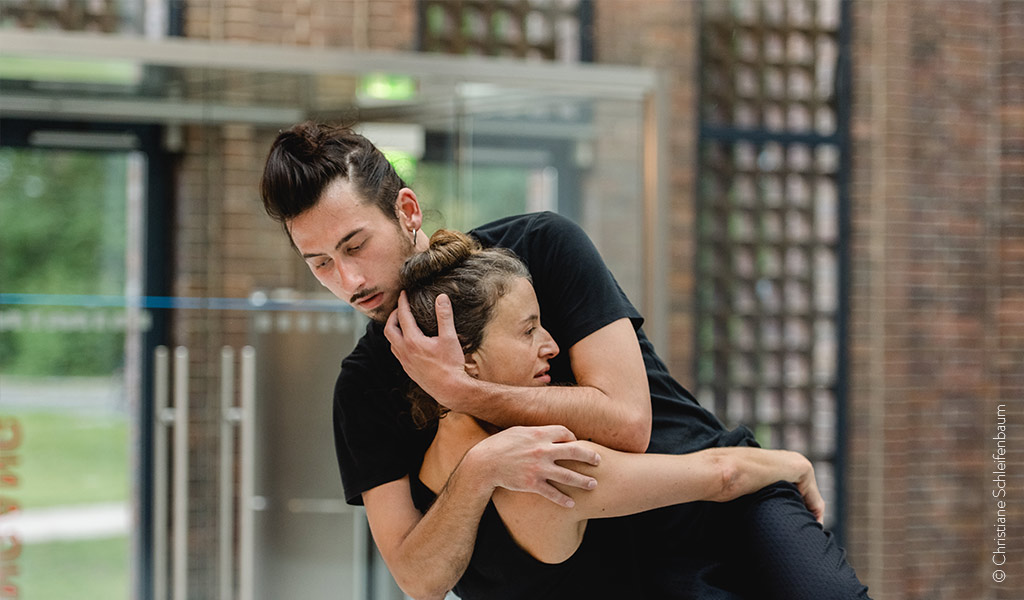A CHOREOGRAPHIC PROJECT FOR THE MUSEUM
Série 1 © Michele MURRAY / Christiane SCHLEIFENBAUM
Série 2 © Alexandra GRÜNBAUM / Christiane SCHLEIFENBAUM
Série 3 © Christiane SCHLEIFENBAUM
2021
In 2021, observing the connection between dance and the visual arts that has been present in my choreographic work over several years, I responded to a call for projects to create a specific choreographic form for the museum space. As part of a month-long residency at the DKW Brandenburgisches Landesmuseum für Moderne Kunst in Cottbus, Germany, I created DUOS / COLLISIONS AND COMBUSTIONS – A Choreographic Collection for the Museum. As the name suggests, this was a series of duets shown simultaneously or consecutively in different spaces of a museum, forming a choreographic collection. I was able to experiment with this form in a wide variety of museums, from large-scale settings to much more modest settings.
Since this experience, begun in 2021, I’ve been developing a dual research and long-term approach in my work, with choreography for the theater on the one hand, and choreography for museum spaces on the other. I’m interested in the specific conventions of audience perception and circulation, and in the respective histories of these two spaces, in order to invent specific forms for each, and transform the way we look at dance and choreography. Today, dance is shown in museums, and performative forms are present on stage. But how do you show dance in a museum?
There’s plenty of matter to think about here, which I have been developing in this long-term project COLLISIONS ET COMBUSTIONS, of which there are two forms to date: DUOS, an exhibition format, and GARDEN, a performative form. In both forms, conceived for the museum space, the dancing bodies constitute the artworks. Both forms explore the link between dance and the visual arts, proposing devices that transform the way we look at bodies, movement, choreography and the museum space. Bodies move through a series of moving motifs, like mobile sculptures, which can be viewed from different angles by the audience, who can circulate as they wish.
There is no sound nor music, aside from the ambient sounds of the museum environment. Over time, through the slowness punctuated by a few accents, through the physical engagement of the bodies in the surrounding silence, a form of concentration is achieved, making introspection possible. Bodies become exhibition objects, creating collisions and combustions of forms, images and sensations, releasing energy. For the duration of a visit, the dancers’ bodies become ephemeral works and living art objects, telling stories and transmitting sensations, questioning the relationship between body, matter, energy and form.

